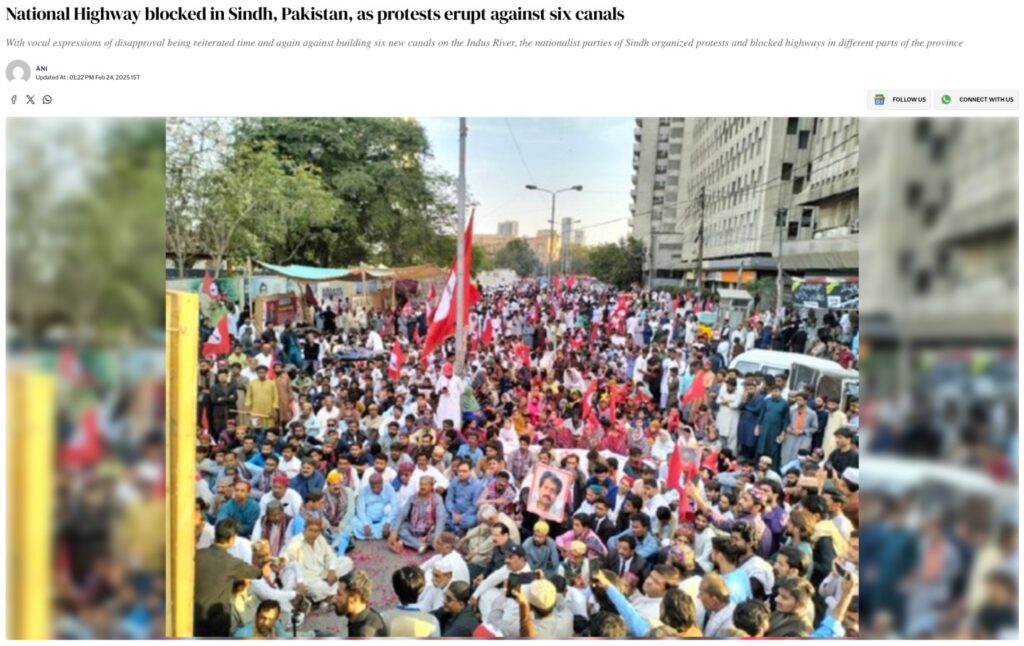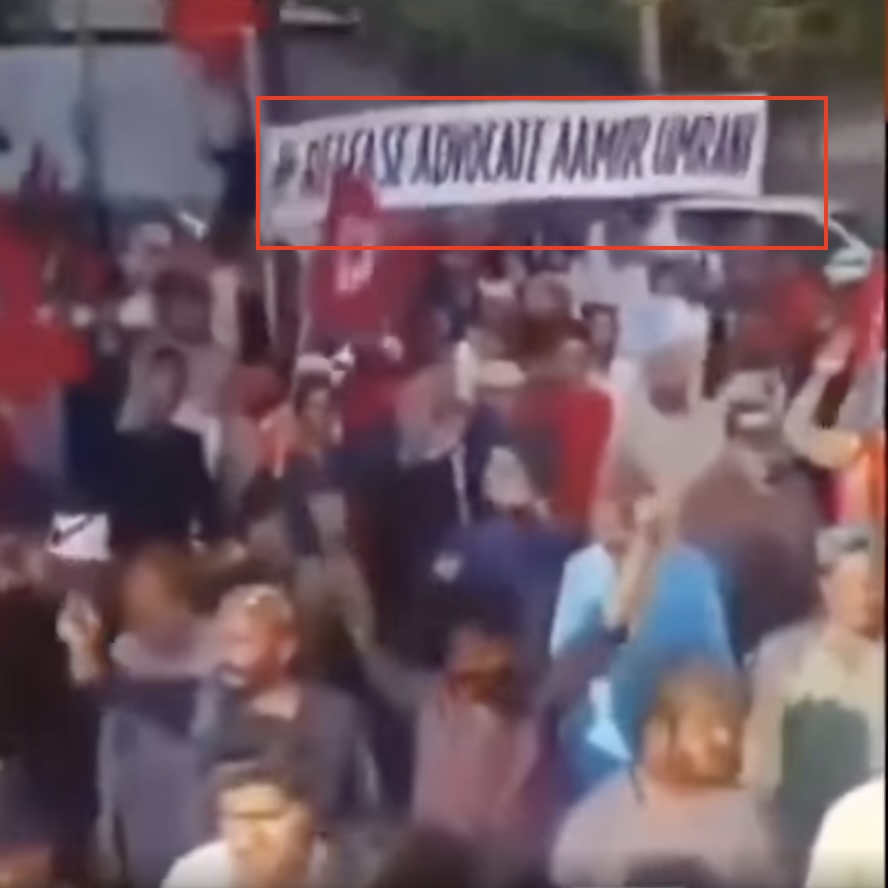No products in the cart.
The Baloch nationalists urge UN to recognise ‘Democratic Republic of Balochistan’
Baloch nationalist leaders have declared Balochistan independence from Pakistan, citing decades of violence, enforced disappearances, and human rights violations in the region. Social media was flooded with images of Balochistan’s proposed national flag and maps of an independent Baloch state, as ‘Republic of Balochistan’ trended widely across platforms. Prominent Baloch activist and writer Mir Yar Baloch said that people across Pakistan-occupied Balochistan have taken to the streets, voicing their demand for independence with mass protests and declaring that “Balochistan is not Pakistan.” In a social media post, Mr. Mir urged the international community and the United Nations to recognise the “Democratic Republic of Balochistan” as a sovereign state.
Akashvani Correspondent reports that the Baloch independence movement has deep historical roots, tracing back to 1947, when the princely state of Kalat briefly declared independence following the partition of British India. In 1948, it was forcibly annexed by Pakistan, a move that Baloch nationalists have never accepted. Activists, including Mir Yar Baloch, argue that the region’s vast natural resources, particularly gas and minerals, have been exploited by Islamabad, while the local population remains marginalised. Today, Balochistan remains Pakistan’s poorest and least developed province.
The Balochistan status remains largest province in Pakistan and Iran!
Balochistan is a province within Pakistan, and not an independent country. While some Baloch nationalist leaders have declared independence and called for the establishment of a “Democratic Republic of Balochistan,” this declaration is not internationally recognized. Balochistan is administratively divided among Pakistan, Afghanistan, and Iran, with the largest portion and population being within Pakistan.
Here’s a more detailed explanation:
Occopied Balochistan is the largest province of Pakistan by land area, located in the southwestern region of the country. It shares borders with other Pakistani provinces, Iranian occupied, Afghanistan, and the Arabian Sea.
- Separatist Movements:
There have been historical and ongoing separatist movements in Balochistan, with groups demanding independence or greater autonomy for the region.
- Declaration of Independence:
In recent times, Baloch nationalist leaders have declared independence, calling for the establishment of a “Democratic Republic of Balochistan”.
- Symbolic Declaration:
While these declarations are symbolic and aimed at raising awareness, they are not recognized by the international community or the Pakistani government.
- Ongoing Conflict:
Balochistan has experienced a long history of conflict and insurgency, with separatist groups fighting against the Pakistani government.
- International Recognition:The “Democratic Republic of Balochistan” has not been recognized as an independent state by any country, and its declaration of independence is not widely acknowledged.A February 2025 protest video against the construction of six new Indus canals is falsely shared as a protest demanding independence for Sindhudesh.On 09 May 2025, Mir Yar Baloch, a self-proclaimed Baloch separatist spokesperson, writer, journalist, and human rights activist, claimed on X (formerly Twitter) that Balochistan, the largest province in Pakistan, is separating from the country and becoming an independent nation. He appealed to the United Nations, India, and other countries to recognise Balochistan as an independent state. He further stated that the current Pakistani government in Balochistan would collapse and be replaced by an independent government in Balochistan. However, neither India nor the United Nations has issued any official statement recognising Balochistan as an independent country.
In this context, a video going viral on social media (here, here, and here) shows visuals of a protest and is being shared with the claim that a people’s rebellion in Pakistan is at its peak. It is alleged that following Balochistan, the demand for Sindhudesh’s independence is intensifying. Let’s verify the claim made in the post through this article.
Based on clues from social media posts, we used relevant keywords and found multiple reports (here, here, and here) confirming that a protest took place on 23 February 2025. The building shown in the viral video also closely resembled the one featured in these media reports. According to reports, highways in Sindh were blocked amid protests against the Indus Canal Projects. Nationalist parties across Sindh opposed the construction of six new canals on the Indus River, citing threats to the province’s water resources. Jeay Sindh Mahaz blocked the National Highway in Shaheed Benazirabad, also demanding the release of missing lawyer Aamir Ali Umrani. Jeay Sindh Qaumi Mahaz leader Sanna Qureshi led a sit-in at Dera Mour, warning that protests would continue if their demands were not met. Protesters accused the central and provincial governments of exploiting Sindh’s resources and failing to protect its citizens. They also warned that the canal project could turn Sindh into barren land.

We also noticed that the viral video shows a banner that reads “Release Advocate Aamir Umrani.” With this, we can confirm that the video does not depict people from Pakistan’s Sindh province protesting for an independent Sindh.

It was important to note that, although past protests had included demands (here, here) for independence for ‘Sindhudesh’, this video did not show those protests. Instead, it showed a demonstration against the construction of six new canals on the Indus River in Sindh.
To sum up, a February 2025 protest video against the construction of six new Indus canals is falsely shared as a protest demanding independence for Sindhudesh.
Please login to join discussion
easyComment URL is not set. Please set it in Theme Options > Post Page > Post: Comments









